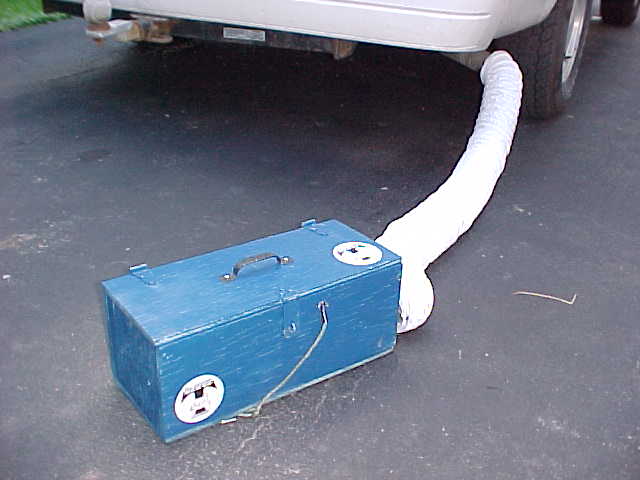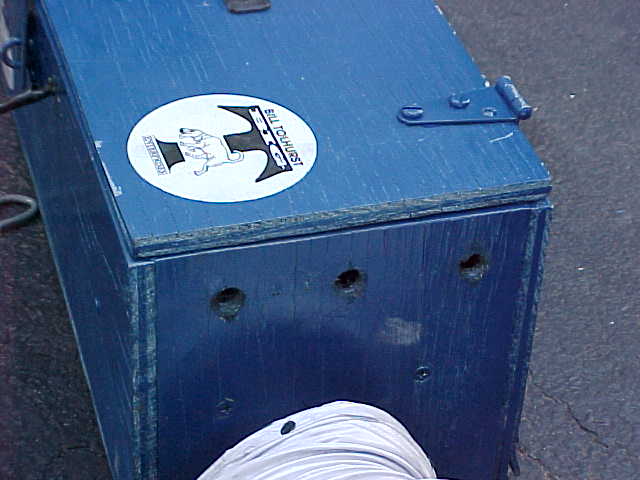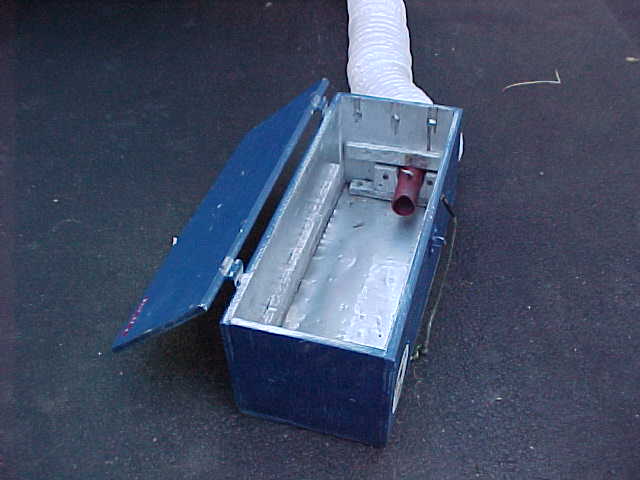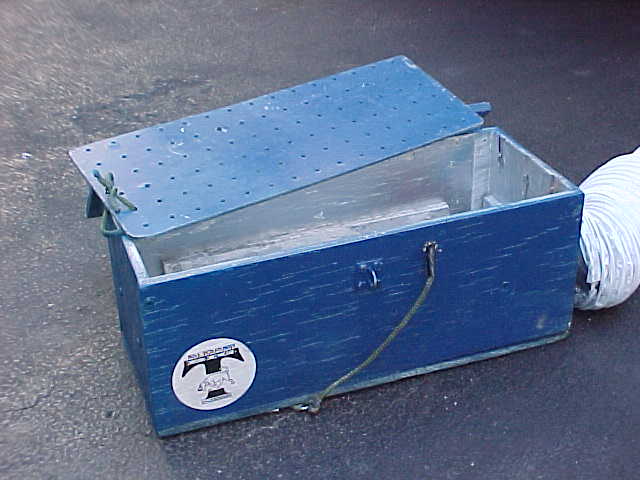
After responding to a shooting at the Buffalo Airport Holiday Inn in 1977 Where a Police Officer
had been killed, I recognized the need to know more on how to collect, preserve, move and
control scent. We needed versatility in the use of scent dogs. I searched all over trying to find
someone who was doing detailed research on scent. The only Experiments, very limited, were
being done was by the National Police Bloodhound Association. I set out on my own in order to
get answers to my questions.
Scent:
you can't see it, you can't smell it, you can't photograph it, you can't dye it, you can't lift it like a fingerprint, you can't find it with a laser, you can't send it to the lab for analysis - but it's there waiting to be used. Think about it, Scent is one piece of evidence that must be present at the scene of a crime. The criminal may walk on a concrete floor and leave no tracks, wear gloves and leave no fingerprints, but he still leaves scent.
SCENT IS EVIDENCE It is good evidence also known as the forgotten evidence
because it is overlooked, ignored & very frequently just abandoned & left
uncollected at crime scenes by many Police agencies across this country every day.
THIS IS EVIDENCE that in some cases can establish probable cause , provide positive
identification and can be collected , preserved and used long after the crime scene has
disappeared.
WHY DOES ANYONE ABANDON ANY KIND OF EVIDENCE AT A CRIME SCENE THAT IS COLLECTABLE??
IT JUST DOESN'T MAKE ANY SENSE.
At one time the belief was if the entire area of a crime scene had been burned there would be no
scent to work with, however after the invention of the STU100 and the research we conducted
on fire/arson scenes that is no longer the case.
While doing the research on molotov cocktails, a question came up as to what kind of relationship existed between heat and scent. We were able to collect scent from a molotov cocktail that had been subjected to heat estimated in the neighborhood of 1200 degrees Fahrenheit. At what temperature would the heat destroy scent and no longer be collectable?I was able to get a human bone that had been cremated at 1700 degrees Fahrenheit. At this temperature, the bone is pure white and very soft and fragile. It must be handled very carefully or it will become powder quickly. Such bones have been bagged, hidden, and used as cadaver finds in training for my cadaver dogs. The dogs will hit on them from ten to twenty feet repeatedly. There is absolutely no smell noticeable to the human nose from these bones.
~ The testing goes on.
Bill Tolhurst
In late Sept. 2001 I located three scent pads that were in a cupboard in my garage. These pads were all dated 1989. These were made for scent research when the scent transfer unit was being developed.
I took one of these pads dated Sept. 20, 1989 that was kept only in a zip-lock plastic bag for the past 11 years and 11 days and decided to use it to run a trail.
Oct 1, 2001 this pad was taken to the Niagara County Fair Grounds (Cornell Center). At that time Don Martineck a retired New York State Trooper whose scent was on that pad laid a split trail with another dog handler. We wanted to see if the scent on the pad was good enough so that a dog could start a trail from it and ID the runner after 11 years and 11 days of storage.
Three seasoned work dogs, two bloodhounds and a Labrador retriever all ran this trail and ID the runner with ease.
Many years ago the National Police Bloodhound Assoc. ran a similar test on scent articles (actually on clothing, T-shirts) that were kept in metal cans. It was determined that dogs could successfully run trails from these article up to 7 years.
Scent pads made with a scent transfer unit (STU-100) are much easier to store than scent articles (shirts or other clothing) Plastic bags are made more convenient that cans an take less room and we have picked up 4 years storage time.. As time goes by other pads will be tested in the future but for now people using scent transfer units can be comfortable with at least 11 years storage on their scent evidence.
There were five who witnessed this test:
Dan Foley - Bloodhound handler Niagara County Sheriff’s Dept.
Bruce Ludmann Jr - Niagara County Sheriff’s Dept.
Don Martineck- New York State Police (retired)
Dave Stark- Bloodhound & shepherd Handler ~ Amherst Police Dept.
And myself
Bill Tolhurst
Those two words, “TOO CONTAMINATED” has haunted the scent dog world for over 50 years that I personally know of.
I don’t believe there is a scent dog handler alive that hasn’t wrestled with this problem and uttered that phrase hundreds of times.
The scene is, “too contaminated” the scent article must have been, “Too contaminated” we would have been OK if the area hadn’t been, “too contaminated”. I would like to know whom the first dog handler was to make that statement and how he knew it was, “too contaminated”.
At this point let me plead guilty to being one of those dog handlers. I even remember the first time I said it on an actual case and it has haunted me ever since.
I believe I was using that statement as an excuse to protect my dog’s reputation or maybe my ego for not succeeding. Today I believe it’s a way of explaining why you didn’t run a trail and that excuse is accepted as a legitimate reason for not trying and an automatic excuse for our failures.
We really don’t know if contamination was ever a factor let alone know if anything was, “too contaminated”
In 1997 I did some research to try and understand how the dog dealt with this problem.
First “whole room” research was done. After a simulated burglary of a cottage scent was collected just out of the air of the cottage. We then sent the owner into the cottage to “discover the burglary”. This was one source of contamination. Then I went in and collected the air samples. This was the second source of contamination. The burglar was the 3rd source of fresh contamination in the building. Plus any contamination that may have been in the building prior to the burglary.
We had the burglar run a split trail with a person who had never been in the building and in an area where the owner and I had never been. Scenting the dogs on the scent pads we had collected from the cottage the dog found the burglar with ease.
Contamination -yes.
Too contaminated no.
This test was followed where a person acting as an abductor handled clothing from a small boy. He handled the clothes about 5 or 6 minutes. Then he buried the clothes. They were left buried for 58 days.
At that time I went to the scene and collected scent off the ground over the place where the clothes were buried, then I dug up the clothes and made pads from them. Split trails were run and the dog ran them very easily and ID the correct (abductor) runner. Dogs trailing from the pads made off the ground grasses over the place where the clothing was buried 58 days earlier were also successful. The buried clothes were covered with soil and debris but this trail was equally successful.
Too contaminated -No
“Too contaminated” was starting to loose some of it’s destructive powers.
Next I built a wooden box about 20” long 9” deep with a tight fitting cover. This time I put; 5 oz. of gasoline with a vented cover 3- 35mm film canisters with cocaine, pot, & Heroin with vented covers A small piece of dynamite (nitro. base)& 8 oz of gun Powder These would be the contaminants for this test. Then I had two scent pads with trail layers scent on them laid in a closed box for 4 days.
At the end of 4 days the box was opened and my STU-100 Scent Transfer Unit was used to make scent pads from the contaminated pads in the box. Three different dogs used these pads. Two bloodhounds and a Labrador found the runners very easily.
Too contaminated -Absolutely not.
This test was repeated this time for a period of 10 days with the addition of 2 fresh bottles of body material and 2 new scent pads.
When the 10 days were up this time I put tight fitting covers on all samples, bagged them and put them out at our training session as blind finds. Narcotic dog could find all the samples including the scent pads. So could the accelerant dog and explosive dog even though everything was cross contaminated. The same day I had a couple of visiting dogs from Des Moines, Iowa, A street dog track and narcotic trained. He found the scent pad because of the narcotic contamination. We then took that pad and used it as a scent article and he immediately trailed and found the runner. Two other dogs did the same thing. A jack Russell terrier from Iowa Search and Rescue was also scented on that scent article and found the runner 15 feet above the ground without hesitation.
Heavy contamination -Yes.
Too contaminated ---No
Bill Tolhurst
One of the very first things that I was told as a new dog handler was that carbon monoxide destroys scent and to make sure that all engines of vehicles are shut off at crime scenes. This is something all dog handlers back in the early 60’s appeared to agree upon. It has been a hand-me-down piece of information for over forty years that I’ve been aware of.

A carbon monoxide study was included in my research in the summer of 2002. This was done to confirm or correct this belief.
I built a small box and lined the bottom of the box with aluminum. This was done so that it could cleaned of any residue oils, carbon, and other products that may come out of the exhaust of an automobile. I then rigged a pipeline from an exhaust pipe to the box so the exhaust material could be emptied directly in the box at floor level.

I then drilled three 1/2 inch holes in the end of the box. This was the same end where the gas entered the box at the bottom with these 3 holes near the top. This allowed pressure to build in the box and that pressure moved the gases over any article that were placed on that shelf and then exhaust out the 3 holes at the top.
About 3 inches up off the bottom of the box I placed a ½ inch ledge to allow a removable shelf to be dropped in the box. This was a piece of pegboard (full of holes) to allow the exhaust material to come up through the holes.


A 5X9 scent pad was given to our runner who placed it under his shirt for about 10 minutes. It was then placed in the box and the top closed. The car was started and allowed to run for 5 minutes forcing monoxide under, over and around the scent article in this closed environment.
I believe that this pad was subjected to more monoxide in 5 minutes than any scent article could receive out in the open air of any crime scene.
Three runners were sent out, one target and two decoys. Steve Richie, Lockport Police Officer and his shepherd, “Blesk” was the first to run the trail, which he did flawlessly, and ID the correct runner.
Then Bernie Wagner and her dog ”Drew” a Border collie ran the same trail (working free). It should also be noted that this handler had been one of the decoys when the trails were laid. Once the dog was scented he ran the trail very easily to the correct runner.
We then put a second pad in the box (using the same runner). We decided to run this pad for 15 minutes, three times as long as the first.
While the pad was being run we discussed what we had just seen and shared opinions on what we should do next. When my timer told me it had one minute to go on the 15 minute agreed upon time I took “Tipper” my Labrador over to the box where the monoxide still under pressure because the VEHICLE WAS STILL RUNNING. She was scented at the discharge holes in the box where CARBON MONOXIDE UNDER PRESSURE was pushing scent from the scent pad out of the box. I gave her the command to trail. Instantly she took trail and running free she found and ID the proper runner.
This test was run 8/26/02 in the present of 6 witness and also videos were made for our documentation.
Dog handlers will have to fine another excuse for not running these trails or failing to run them successfully. CONTAMINATION won’t cut it anymore.
If you don’t believe it --- TRY IT.
WITNESSES:
Bruce Ludmann Jr
Bruce Ludmann Sr
Bernice Wagner
Steve Richie
Betsy Copeland
Dan Foley
Bill Tolhurst
Bill Tolhurst